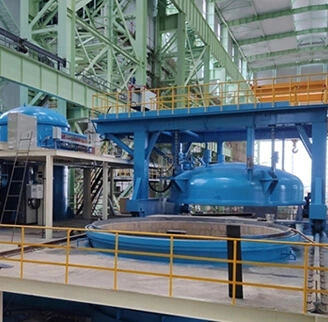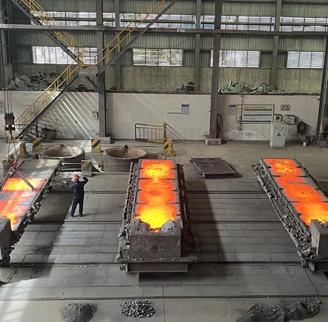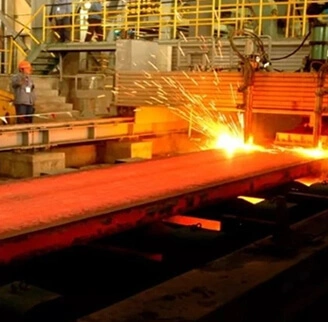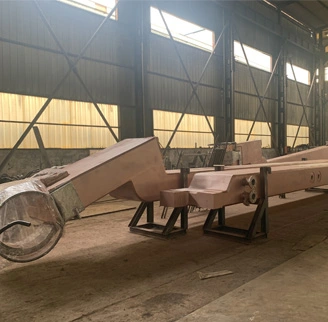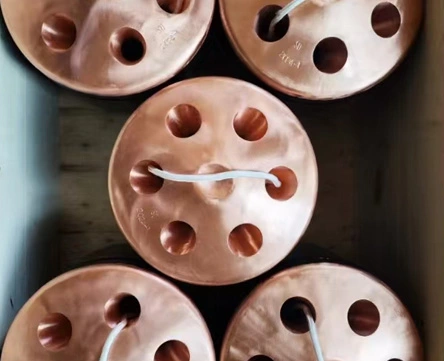As the steel industry continues to embrace advanced technologies for refining and producing high-quality steel, it becomes crucial to assess the environmental implications of these processes. Vacuum Oxygen Decarburization (VOD), a method used in steelmaking, stands as a notable example, and its environmental footprint warrants careful consideration. In this exploration, we delve into the ecological aspects of VOD and shed light on the environmental implications associated with this steel refinement process.
VOD Process Overview: A Brief Recap
Efficiency in Steel Refinement:Before delving into the environmental implications, let's briefly recap the VOD vacuum oxygen decarburization process. VOD is a secondary steelmaking process that focuses on reducing the carbon content in molten steel. The method involves the introduction of oxygen into the molten steel under vacuum conditions, facilitating the removal of excess carbon and other impurities. This refinement enhances the quality and properties of the steel, making it suitable for a wide range of applications, from automotive to construction.
Reducing Carbon Footprint in Steel Production:One of the primary goals of VOD is to produce cleaner and higher-quality steel by efficiently removing impurities. The process aims to reduce the carbon footprint associated with steel production by enhancing the efficiency of decarburization and minimizing the need for additional refining steps.
Energy Consumption in VOD: Evaluating the Trade-Offs
Energy-Intensive Nature:While VOD contributes to the production of cleaner steel, it comes with its set of environmental considerations, particularly concerning energy consumption. The VOD process is inherently energy-intensive, requiring significant power for creating and maintaining vacuum conditions, as well as supplying oxygen. The high energy demands contribute to the overall environmental impact of steel production, raising questions about the trade-offs between steel quality and energy efficiency.
Balancing Act: Steel Quality vs. Energy Efficiency:The challenge lies in striking a balance between achieving the desired steel quality through processes like VOD and minimizing the associated energy consumption. Innovations in energy-efficient technologies, the use of renewable energy sources, and process optimizations are critical factors that can influence the environmental performance of VOD. Industries must navigate this delicate balance to ensure that steel production remains economically viable while mitigating its environmental impact.
Waste Generation and Emissions: Examining Environmental Outputs
Dust and Emissions Control:Another environmental consideration in VOD relates to the control of dust and emissions generated during the process. The handling and treatment of dust, along with the management of off-gases produced during decarburization, present challenges in maintaining air quality and minimizing the release of pollutants into the environment. Stringent measures for dust collection and gas treatment are imperative to mitigate the potential environmental impacts of VOD.
Water Usage and Effluent Treatment:Water plays a crucial role in the VOD secondary refining process, from cooling equipment to facilitating various stages of steel refinement. The environmental implications extend to water usage and the treatment of effluents generated during the process. Proper water management practices, including recycling and treatment of wastewater, are essential to ensure responsible and sustainable VOD operations.
In conclusion, the environmental implications of VOD furnace in steel production highlight the need for a holistic approach to sustainable metallurgy. While VOD contributes to cleaner and higher-quality steel, the energy-intensive nature of the process and associated environmental outputs necessitate careful consideration. Striking a balance between achieving steel quality and minimizing the ecological footprint requires ongoing research, technological advancements, and a commitment to adopting best practices in energy efficiency and emissions control.
As the steel industry continues to evolve, it is imperative to address the environmental implications of refining processes like VOD. By prioritizing sustainability, embracing technological innovations, and implementing responsible operational practices, the steel industry can navigate the challenges posed by VOD and work towards a future where steel production aligns seamlessly with environmental stewardship.
 back homepage
back homepage
 EN
EN
 fr
fr  ar
ar  fa
fa 
